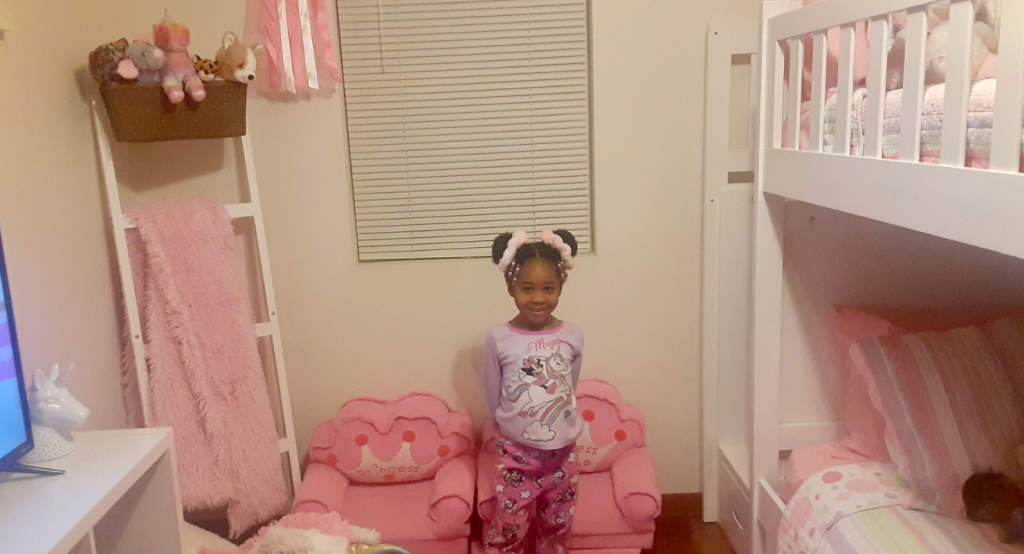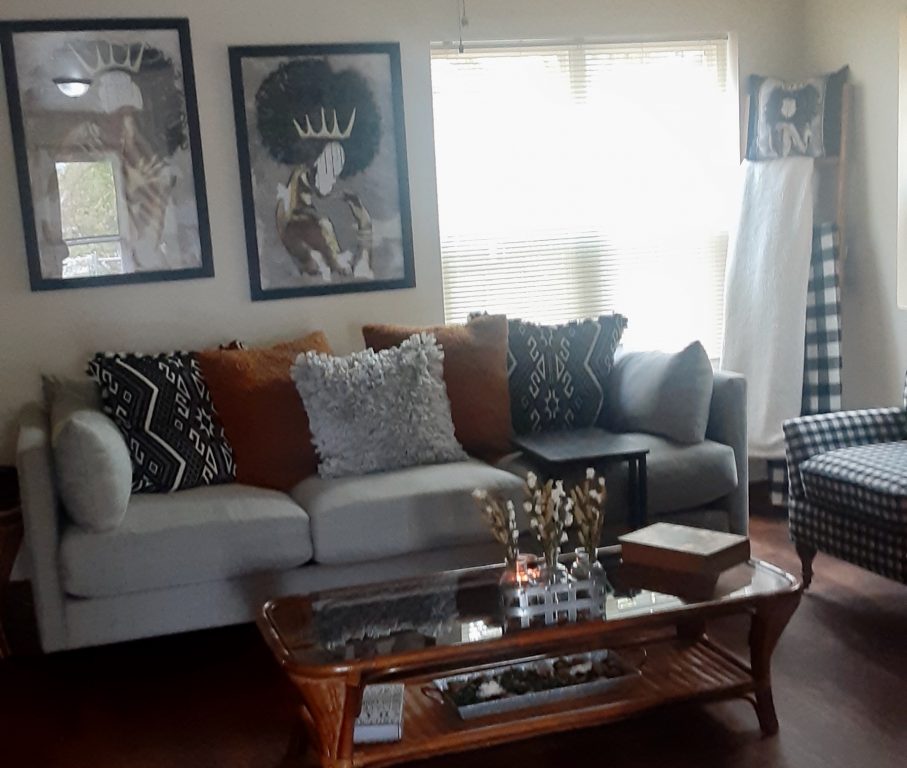Habitat for Humanity Program Nurtures Homeownership
Program makes homeowning accessible and encourages community ties.

Namirah Joy lives with her mother, Wendy Winston, in their dream home in Midtown. Photo provided by Wendy Winston/NNS.
Wendy Winston has known about Habitat for Humanity for the last 15 years, but it wasn’t until she had her daughter that she decided to become a homeowner.
And she said it was the best decision she’s ever made. Winston and her 5-year-old daughter, Namirah Joy, now live in her dream home in the Midtown area.
“From what I know of the program, my process was actually a short one,” Winston said. “The process was amazing.”
“And I love my home,” she added.
She said the team working with her was accessible when she had questions and that they still are even though she’s no longer in the program.
Winston said being a homeowner has changed her quality of life. When she was renting, she was paying more than $1,000 to get the quality of home she wanted, and now she’s paying $730 a month.
“I’m taking my daughter on vacation in a few months,” Winston said. “I can do that now because I can save money.”
She said the process itself helped her create bonds with her neighbors.
“During my sweat equity hours, I met one of my closest friends. She lives down the street from me and I live next door to her parents,” she said. “We wouldn’t have become friends if we didn’t meet while completing our requirements to be homeowners.”
Now, Winston said she’s become more focused on the community.
“I’m planning to start attending the neighborhood meetings again,” she said. “It was a requirement initially, but I appreciated how informed I was on what was going on in the neighborhood.”
Natasha Gray, the director of family services at Milwaukee Habitat for Humanity, said that’s the goal of the program.
“We are trying to create bonds and build communities,” she said.
Gray said the “sweat equity” requirement helps the process by having homeowners, neighbors, staff and volunteers work together.
“It creates some buy-in to know you help build your neighbor’s house,” Gray said.
She said the program is hard work, but she is in constant awe of the ending.
“From the small milestones to seeing people go through sweat equity to finally being able to have a closing celebration is so amazing to see,” she said.
Winston agrees that the process can be challenging but doable.
“When I applied for the program, I had a toddler and was taking care of my mom who was struggling with cancer,” she said. “There wasn’t time for much else, but I knew what I wanted to do, so I did it.”

In November of 2020, Winston applied for Milwaukee Habitat for Humanity’s homeownership program while still looking for places to rent. Photo provided by Wendy Winston/NNS.
Nine things you should know
1. What you need to know about the program
These opportunities are coming at a time when Milwaukee is in an affordable housing crisis. One in three renters are spending half or more of their income on housing, according to Jake Brandt, the director of marketing and communications for Milwaukee Habitat for Humanity.
Milwaukee Habitat’s mortgage won’t exceed 30% of a family’s income. Typical mortgage payments will average $600 to $800 per month, based on family income and type of home.
Register and watch the free, no-obligation homeowner orientation online here. The orientation will cover the requirements, benefits and other details about Milwaukee Habitat’s affordable homeownership program.
3. How do you know if you qualify?
The main qualification is the need for affordable housing. This means you must be a first-time homebuyer with inadequate housing.
All qualifications are online here.
4. How do I apply?
After watching the online orientation, you can fill out an application here.
The application process is easiest when applicants turn in all necessary documents when they return the application. Here are the documents needed.
- Last four consecutive paycheck stubs
- Recent Social Security award letters for the entire household (as well as for any other benefits approved, state or federal, if applicable)
- 12-month child support history (if applicable)
- Photocopy of your driver’s license or state ID
- Photocopy of Social Security card for each applicant
- Photocopy of your last bank statement (checking, savings, money market, etc.)
- Signed authorization form provided in the application.
5. What if I have more questions about the process?
Most questions are covered in the homeownership orientation, so be sure to pay attention to that. If you have questions after that, you can email Mirella Reyes at mreyes@milwaukeehabitat.org.
6. How long should I wait to hear back about my application?
People should hear back within four to six weeks.
Once accepted into the program as a partner family, you will complete “sweat equity.” This means you will contribute hundreds of hours of work in the construction of your home and the homes of your neighbors.
This means you will gain construction skills, home maintenance skills and take financial education classes to help prepare for the unexpected.
8. Can I still apply if I do not meet all of the qualifications?
Program leaders say you should apply anyway – even if you have bad credit.
9. Anything else I need to know?
It can take from 12 to 18 months to complete building a home. There are a few home designs Habitat uses, but homebuyers can help pick flooring, counters, paint colors and siding for their homes.
“This is a long process and doubts will kick in,” Winston said. “But be patient and stay organized because it’s worth it.”
The ins and outs of Milwaukee Habitat for Humanity’s homeownership program was originally published by the Milwaukee Neighborhood News Service.





















